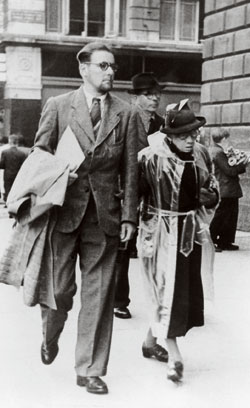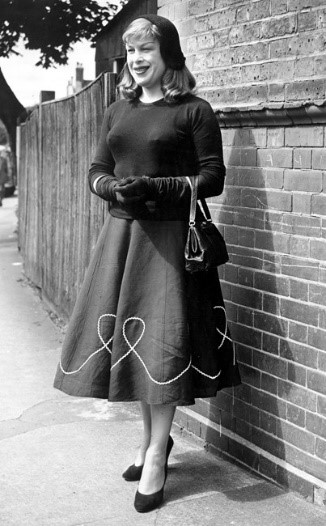Trigger Warning: Transphobia
The 1950s were the years that the concept of medical gender transitioning became possible in the UK, with 2021 marking seventy years since the first known male to female sex change carried out in Britain. The story leading up to this milestone was long and complex, and the lives of two trans pioneers, Michael Dillon and Roberta Cowell, are grossly neglected by mainstream LGBTQIA+ history. In fact, it is time for trans history in general to become more centralised in historical narratives of gender and sexuality.

Michael Dillon (1915-1962) was the first person in the world to fully transition from female to male, having always identified with a masculine gendered identity. He began hormone therapy in 1940 before achieving a birth certificate change in 1944, having secured a letter from his doctor declaring him to be intersex, providing the basis for this change. When Dillon went to the Labour Exchange for a new identity card to reflect this change, the clerk is said to have declared “We have had quite a lot of these applications,” fulfilling his request “without batting an eyelid”.
Nine years later, Dillon underwent a genital reconstruction surgery in Basingstoke, carried out by the leading plastic surgeon Sir Harold Gillies, dubbed “the father of plastic surgery” for his incredible cosmetic work on veterans of combat. Somewhat surprisingly, the operation was completely permissible, though the first of its kind: antiquated legislation continued to ban the ‘mutilation’ of male genitals, but medical intervention concerning the female genitalia, and therefore phalloplasty, was entirely legal. Dillon later himself trained as a doctor, publishing his Self: A Study in Ethics and Endocrinology in 1946. This work laid out the argument that being trans was not a new phenomenon, and that trans individuals had a place in the natural order of things. After qualifying as a physician, Dillon worked as a ship surgeon for several years to lay low, but after many years of protecting his privacy, he was outed by the Sunday Express in 1958. The attention drove him to India, where he became the first western European to be ordained as a Buddhist monk, and wrote until his death in 1962.
In 1949 Dillon had been

tracked down by one avid reader of his Self, Roberta Cowell. Cowell (1918-2011) had been a racing driver in the 30s and a spitfire pilot during the war, consulting psychiatrists in the late 40s for what would now be termed gender dysphoria. She began living as a woman, and sought out Dillon to assist her further, which he did, with an illegal orchidectomy (removal of testicles). The two developed an extremely close bond, for Cowell this was friendship, but Dillon became romantically involved: he had long believed that his predicament would deprive him of the chance for love with a cisgender woman, on account of him not being able to father biological children. He intentionally created a reputation of himself as a misogynist to prevent any women from developing interest in him, and believed that Cowell’s level of understanding would make them a perfect match. This was an unrequited attachment.
Like Dillon, Cowell later was operated on by Gillies, resulting in Britain’s first ever surgically created vagina. She later sold her story to the Picture Post in 1954, and continued to pursue her love of motor racing, winning the 1957 Shelsley Walsh Speed Hill Climb. Also like Dillon, she managed this on an assertion that she was intersex, characterising the subsequent procedure as corrective. Controversially, she later used this basis for her transition as a tool to separate herself from the transgender community. In a final interview from 1972, she explained that she had XX male syndrome, describing those with XY chromosomes who transitioned as “freaks”. Cowell condemned the permissive society for allowing others to follow in her footsteps, and then withdrew from public life. She struggled to find work, and died in sheltered housing in 2011.
This is just the tip of the iceberg in this absolutely fascinating series of events, and just a glimpse at the incredible lives of these two individuals. Both flawed, but both crucial to our understanding of trans heritage Britain. In times such as these, it is important not only to push forwards for change, but to look backwards. It is the erasure of trans histories which helps perpetuate transphobic narratives. To find out more about Dillon and Cowell, see Pagan Kennedy, The First Man-Made man: the story of two sex changes, one love affair, and a twentieth century medical revolution’ (New York, 2007).
Sources
Trans Pioneers – Trans and Gender-Queer Histories | Historic England
Roberta Cowell | UCL Campaign – UCL – University College London

1 thought on “LGBTQIA+ History Month – Trans Pioneers: Michael Dillon & Roberta Cowell”
Comments are closed.